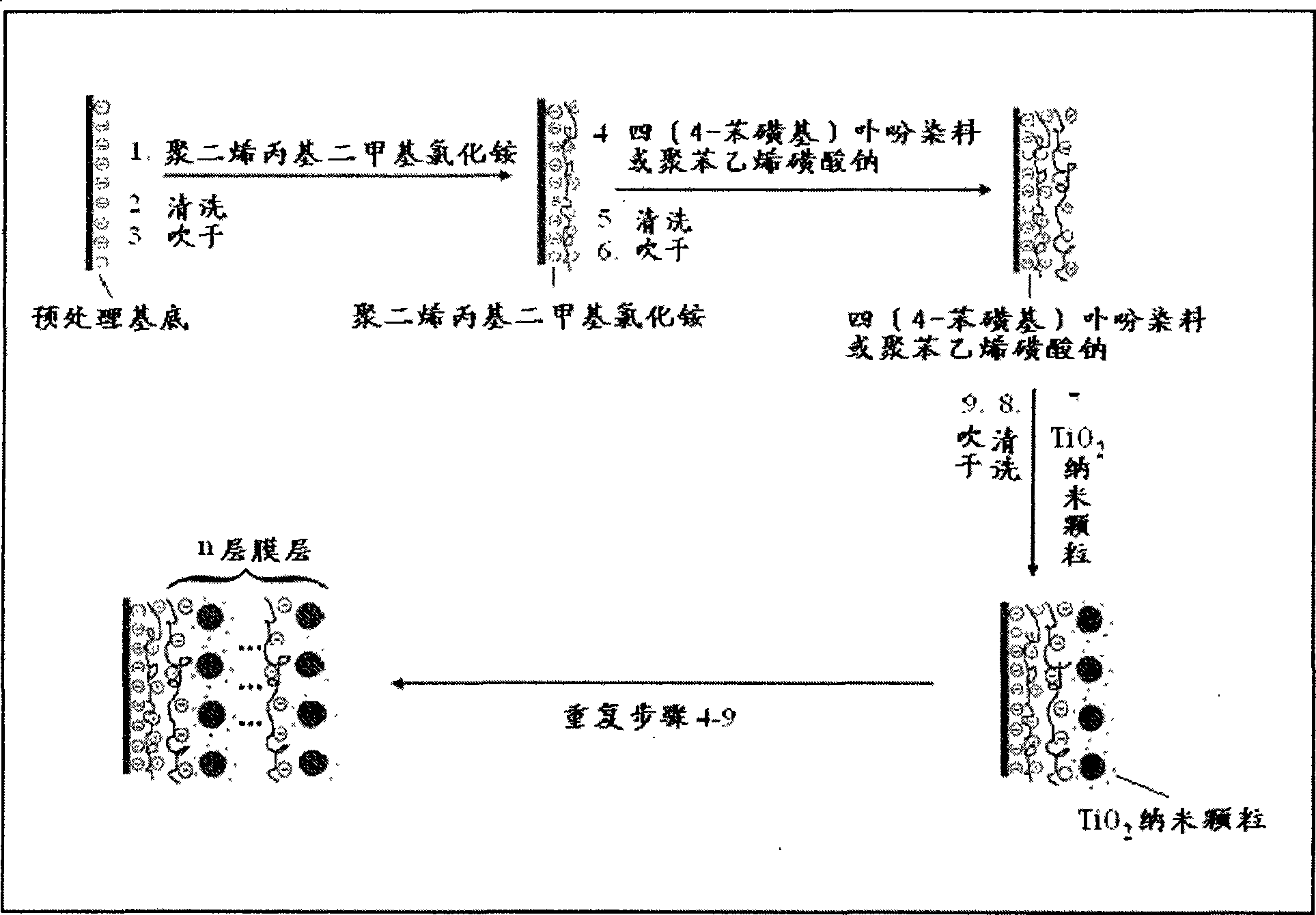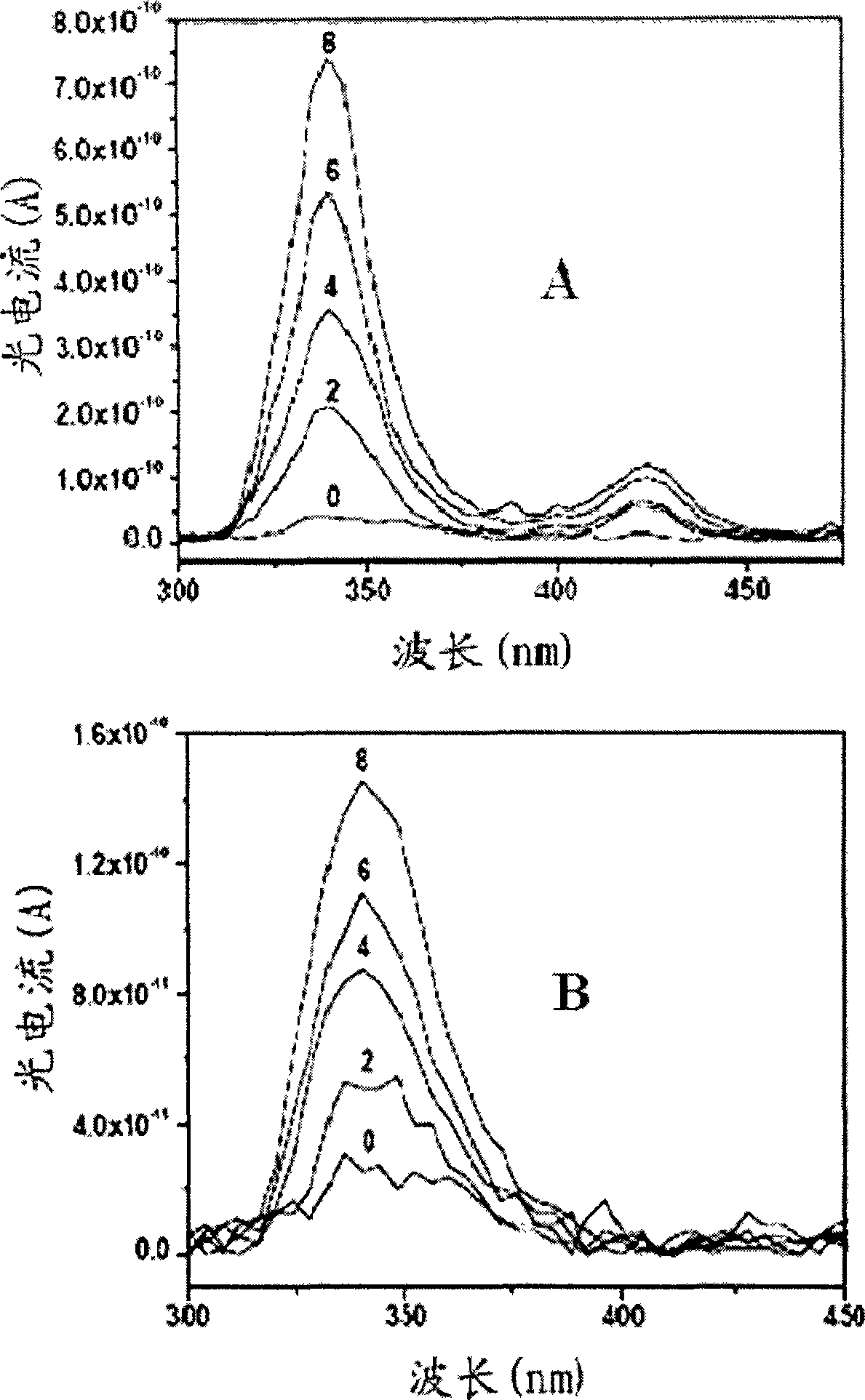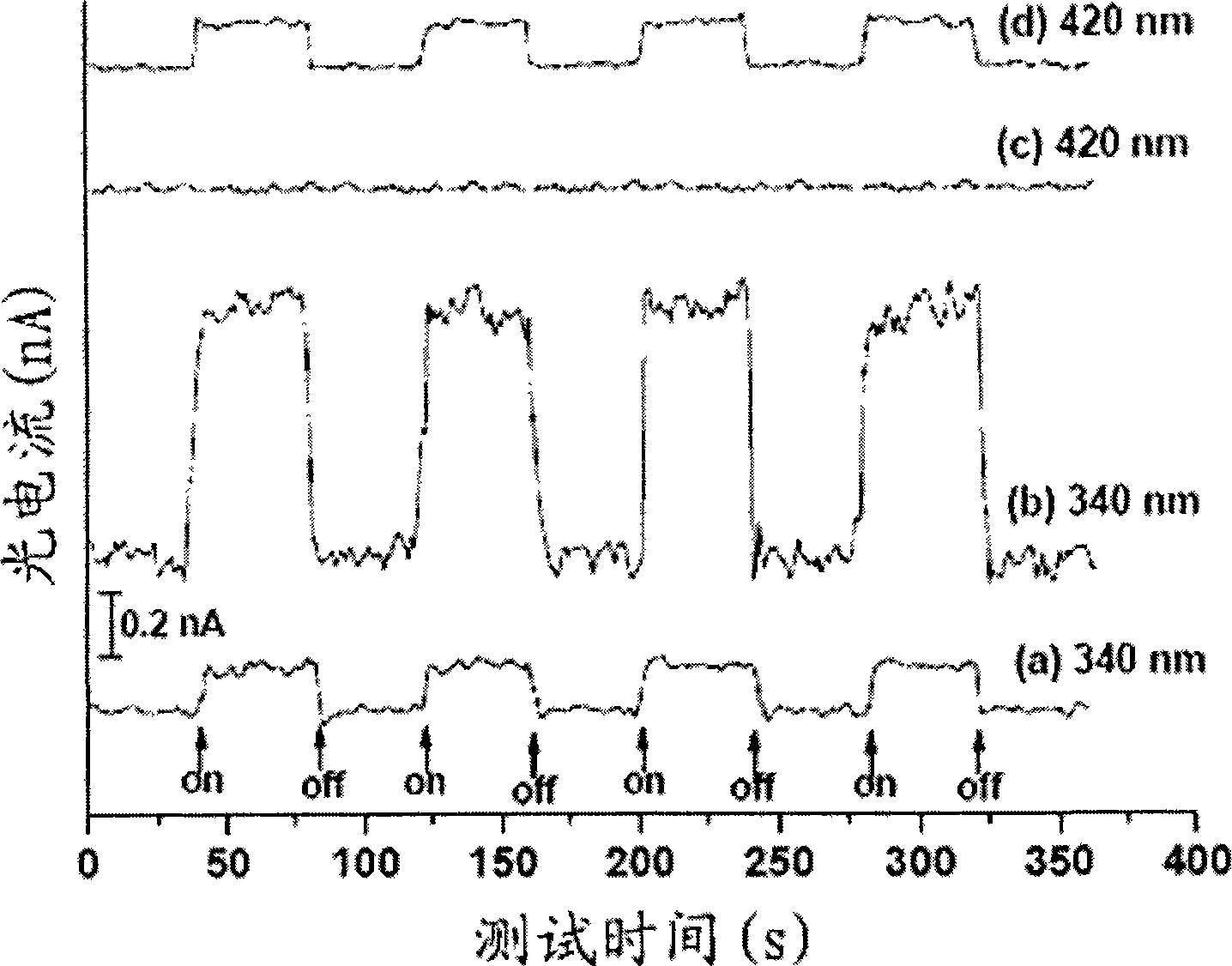Inorganic/organic compound film photoelectric pole and preparation method thereof
A technology of composite film and photoelectrode, which is applied in the direction of photosensitive equipment, circuits, capacitors, etc., to achieve the effect of simplifying the implementation process and reducing the difficulty
- Summary
- Abstract
- Description
- Claims
- Application Information
AI Technical Summary
Problems solved by technology
Method used
Image
Examples
Embodiment 1
[0026] 1) The substrate is cleaned and negatively charged: the substrate of a quartz glass sheet (2.5cm×2cm×1mm) is 98% concentrated sulfuric acid and 30% H 2 o 2 (Volume ratio is 3:1) After being treated in the mixed solution at 80°C for 1 hour, rinse with deionized water, dry with pure nitrogen and store in deionized water. At this time, the substrate will remain hydrophilic and negatively charged. ;
[0027] 2) Preparation of inorganic TiO with anatase crystal phase 2 Nanoparticles: Dissolve 1.25mL of tetraisopropyl titanate in 25mL of ethanol solution, then drop the mixed solution into 250mL of stirred deionized water for reaction, and prepare the final product into a suspension with a concentration of 3wt%. , while adjusting its pH value to 3 with 1M hydrochloric acid, at this time TiO 2 The surface of nanoparticles has a positive charge, and the particle size is 2-4nm;
[0028] 3) LbL self-assembly process: first soak the negatively charged and pretreated quartz glas...
Embodiment 2
[0030] 1) substrate cleaning and making it negatively charged with embodiment 1;
[0031] 2) Preparation of inorganic TiO with anatase crystal phase 2 Nanoparticle is with embodiment 1;
[0032]3) LbL self-assembly process: first soak the negatively charged and pretreated quartz glass substrate in 50mL polydiallyldimethylammonium chloride (PDAC) aqueous solution (1.0mg / mL) for 5min, Then, a layer of positively charged PDAC molecules was adsorbed on the surface of the substrate through electrostatic interaction, and then the substrate was successively placed in 50 mL of negatively charged polystyrene sodium sulfonate (PSS) solution (1.0 mg / mL) and charged with Positively charged TiO with a pH of 3 2 Soak in the nanoparticle suspension for 5 minutes each to form a layer of inorganic / organic double-layer structure. This is one cycle, and then through multiple cycles, TiO is finally prepared. 2 / Inorganic / organic multilayer films of polystyrene sulfonate sodium (PSS) molecules...
Embodiment 3
[0034] 1) Clean the substrate and make it negatively charged: the fluorine-doped tin oxide conductive glass substrate (2.5cm×1cm×2mm) is ultrasonicated for 5 minutes with deionized water, acetone, deionized water, absolute ethanol and deionized water in sequence. After cleaning, it was placed in a strong alkali mixed solution (prepared from 1gKOH, 60mL absolute ethanol and 40mL water) for ultrasonic treatment for 2min, then repeated ultrasonic cleaning with deionized water for 3 times each for 1min, dried with pure nitrogen and placed in Store in a desiccator, at which point the substrate will remain hydrophilic and negatively charged;
[0035] 2) Preparation of inorganic TiO with anatase crystal phase 2 Nanoparticles: with embodiment 1;
[0036] 3) LbL self-assembly process: Firstly, the negatively charged and pretreated fluorine-doped tin oxide conductive glass substrate was placed in 50mL polydiallyldimethylammonium chloride (PDAC) aqueous solution (1.0mg / mL ) for 5 minut...
PUM
| Property | Measurement | Unit |
|---|---|---|
| length | aaaaa | aaaaa |
| width | aaaaa | aaaaa |
| thickness | aaaaa | aaaaa |
Abstract
Description
Claims
Application Information
 Login to View More
Login to View More - R&D
- Intellectual Property
- Life Sciences
- Materials
- Tech Scout
- Unparalleled Data Quality
- Higher Quality Content
- 60% Fewer Hallucinations
Browse by: Latest US Patents, China's latest patents, Technical Efficacy Thesaurus, Application Domain, Technology Topic, Popular Technical Reports.
© 2025 PatSnap. All rights reserved.Legal|Privacy policy|Modern Slavery Act Transparency Statement|Sitemap|About US| Contact US: help@patsnap.com



